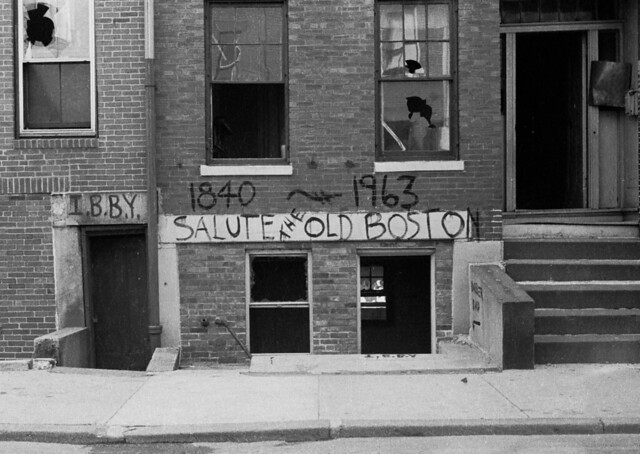
At about the same time I met Betsy, who had a job printing photos for an archaeological expedition and already thought of herself as a photographer, and pretty soon I took on that identity for myself. I read photography magazines, started to accumulate photo books, gradually started to learn about famous photographers, and joined the staff of the Yearbook (free film, paper at cost, good darkroom facilities). By spring 1963 Betsy and I were a Couple, and frequently set off on photographic expeditions in Cambridge and Boston.

So I've worn the identity photographer for 55 years, and the avocation followed me to Sarawak in the Peace Corps, to Stanford during 5 graduate school years, to Nova Scotia for 20 years of teaching and research, through a leap to a library career in Virginia, and finally into 12 years of retirement in Maine. The tide of photographing has ebbed and flowed, but even when I wasn't using the camera much I was buying and studying photography books, and working on various image projects.
We both began again with digital cameras about the time of my retirement, and the last decade has seen both of us ever more deeply involved as photographers. We live near the Maine Media Workshops, and have taken a variety of courses there. Betsy developed her long-run interest in macrophotography and pursued gallery membership for several years, but I have been content to remain closeted except for public exposure via my Flickr photostream.
The core of my interest in photography is a continuing search for revelations and epiphanies, and they seem to keep coming in great variety, both in my own practise and via extensive reading in photo books. A succession of discoveries, indeed a lifetime of them, has come out of (seemingly) nowhere; each might be a springboard into a new Project/fascination/realm of discovery, and I never know when another will announce itself. Quite a few have condensed as Flickr Albums, and some have become Blurb books (see links to pdfs of those). Others are gradually accumulating in my Flickr photostream, awaiting their moments. Thus, a series of back-road calligraphies is well on its way to becoming a new Project:
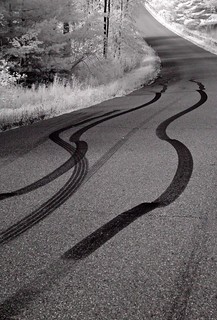
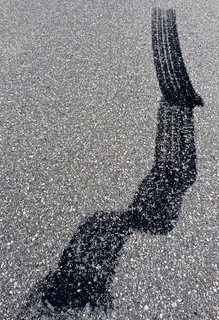

For me, images are integral elements in stories, which I've been satisfied to manage and distribute in digital form. Whimsey seems to be a prime mover for me, but sometimes poses difficulties for viewers of my creations (what on earth does he mean? where did that come from?). Often an image's identity emerges during post-processing, and spawns an allusive (and often idiosyncratic) name that attaches it to a nascent narrative. This one seems to be, or to invoke, Gilgamesh:
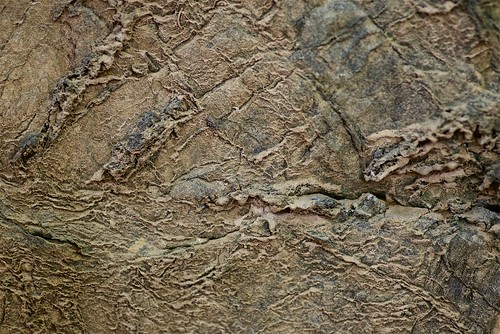
A recent example of emergent but still inchoate narrative is the series of tree wounds now accumulating as a Flickr Album. I certainly had no idea there was a story here when (almost 8 years ago) it occurred to me that this capture ("Shrieking Tree Creature") could be read as a tree in extremis:

Another realm I've been exploring has to do with symmetrical constructions using GIMP. These began with serendipity: while testing a rented lens about 5 years ago, I happened to photograph some frosted chard in the garden:

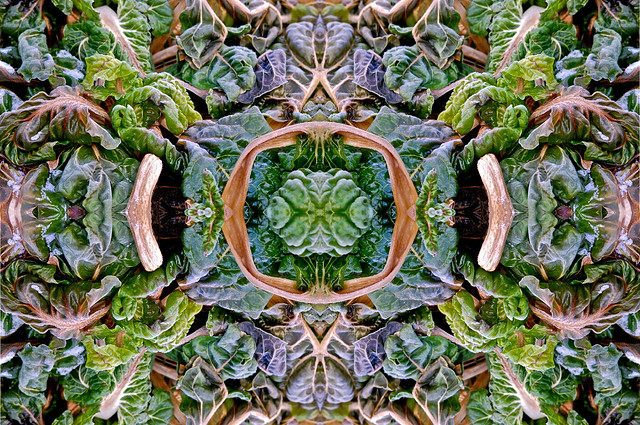
So photography is, for me, an integral part of life, right up there in importance with my highly-elaborated enthusiasms for music and reading and food and walking, all of which are pretty deeply involved in improv. The iPhone is always with me, and the camera bag (these days it contains Nikon D610 and infrared-converted Nikon D5000) is never far away. I see lots of photographs that I don't stop to take (a friend calls that "catch-and-release"), but as I watch Betsy's photographic enterprises I also realize there are vast worlds that I don't see, don't notice, don't imagine. It's a delight to continue to explore and discover.